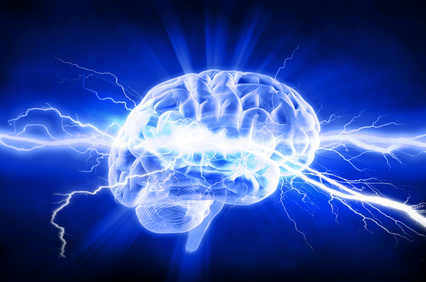 Until recently, the standard position in the perennial religion vs. science wars was one of truce. Stephen J. Gould, the late evolutionary biologist, coined the phrase "non-overlapping magisteria" to formalize the terms of the truce: religion would confine itself to its concerns with the immaterial soul and science would concern itself with the nature of the material world. Neither discipline would or should attempt to interfere with the other. Andrew Newberg, M.D.'s new work, Principles of Neurotheology, challenges this division.
Until recently, the standard position in the perennial religion vs. science wars was one of truce. Stephen J. Gould, the late evolutionary biologist, coined the phrase "non-overlapping magisteria" to formalize the terms of the truce: religion would confine itself to its concerns with the immaterial soul and science would concern itself with the nature of the material world. Neither discipline would or should attempt to interfere with the other. Andrew Newberg, M.D.'s new work, Principles of Neurotheology, challenges this division.
Gould's truce proved impossible to maintain, of course, and the truce has already broken down. The cause of the breakdown must be laid at the feet of the cognitive neuroscientists, since these scientists keep delivering breakthrough insights and findings on the nature of the mind and brain – insights that go to the very core of the religious enterprise. Most recently, the cognitive neuroscientists have turned their attention to the study of the nature of the religious consciousness itself.
It is this latter development that is particularly significant for the science and religion wars, as it portends a development nobody predicted and nobody could have foreseen – the development of a new and rigorous science of religion itself. That new science has been variously called the neuroscience of religiousness, the cognitive neuroscience or religion or, more popularly and simply, ‘neurotheology’ – though its practitioners are very uncomfortable with the latter term. They contend they are doing science, not theology. In any case, the new field has its conferences, its developing cadre of students, scientists, and specialists, its own journal (Religion, Brain and Behavior, published by Taylor and Francis) and now, perhaps, its coming-of-age text in Newberg's Principles of Neurotheology.
Newberg is the Director of Research at Thomas Jefferson University and Hospital's Myrna Brind Center of Integrative Medicine in Philadelphia. He has done superb work in neuroradiology and has almost single-handedly propelled the field of neurotheology forward via his landmark papers on neuroimaging (such as PET and fMRI scans) of brains undergoing religious experiences. He has written several popular books addressing the relationship between the brain and religious experience. In Principles of Neurotheology Newberg develops set of 54 principles that the new science should follow if it is to develop as a rigorous discipline and science of the religious brain.
Most of the principles are simply recommendations for standard scientific practice when conducting studies on religion and brain. But other, more laudable (and more courageous), recommendations are that the new science must incorporate insights from both religious practitioners and religious specialists. The neuroscientists need to learn from specialists in religious studies, including philosophers of religion and theologians. These scholars have an appreciation for the historical and cultural diversity of religious expression, as well as insights into human mental states and consciousness garnered from centuries of reflection by religious adepts from virtually every religious tradition. As Newberg points out, for neurotheology to fulfill its promise on a practical level, students who seek to develop careers in the field must be trained in both the neurosciences and in religious studies or theology. It is probably the case that there are only a handful of scholars in the world today who have received thorough training in both neuroscience and in religious studies – yet that is what this new field will require if it is to mature and bear fruit. Religious practitioners must not only be subjects in the research studies conducted by neurotheologians, but they must inform research designs that are sensitive to the vast array of religious expressions that characterize the world’s peoples.
It is an interesting fact, for example, that the brain activation patterns of expert meditators when meditating are unlike those of any other mental state. Furthermore, these brain activation patterns are reliably associated with profoundly beneficial physiologic states such as repose, relaxation, and bliss. Without expert "informants" who informed the neuroscientists that such brain states were possible, we would never have investigated brain activation patterns in expert practitioners and thus would have never verified the existence of these sorts of brain states and physiologic responses. In short, the collaboration between neuroscientists and religious specialists has the potential to revolutionize our understanding of brain capacities and processes.
If the religious specialists can teach the neuroscientists something new about the brain, what about the other way round? Newberg strongly advocates discarding the traditional, reductionist ("Religion is nothing but…") approach adopted by all too many psychologists of religion in the past. Instead he claims that a respectful but skeptical approach to the religious brain will cast new light on old theological truths and positions. Newberg’s claim is that neurotheology, if it adopts the principles laid out in his text, can enrich both our understanding of the brain and of religious truth itself. The nascent field of neurotheology would do well to listen to Newberg’s principles.
Principles of Neurotheology (Ashgate Science and Religion Series). Paperback. 284 pages. Ashgate, September 1, 2010. ISBN-10: 0754669947.
Editor's note: this book has previously been reviewed at IBCSR.org. See here for the article.
